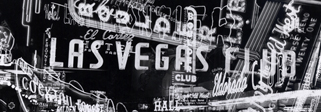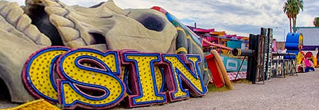Tuesday, April 22, 1952 | 6 a.m.
The weatherman flashed a green light last night for this morning's atomic explosion--the highest and possibly the biggest ever set off inside the United States. A four-engined Air Force B-50 bomber flying at an altitude of approximately 30,000 feet is scheduled to drop the king-sized A-bomb over Yucca Flat, a site of 14 previous nuclear detonations, at 9:30 a.m.
The bomb, one of a growing family of aerial atomic weapons, will burst between 3,000 and 3,500 feet above the parched floor of the southern Nevada desert.
The first "public" A-bomb blast ever held inside this country will be witnessed from "News Knob," a rocky hilltop about ten miles away, by about 200 carefully screened reporters, cameramen and civilian defense observers. It will also be the first A-bomb explosion in history to be televised and flashed on TV screens across the nation just as it happens.
Dr. Alvin C. Graves, scientific test director, said the A-bomb "will be exploded higher in the sky than any other we have set off any place."
Previous aerial A-bombs tested in Nevada are believed to have been detonated at altitudes ranging around 2,000 feet. The Able Day bomb at Bikini in 1946 was touched off at about that height.
No one connected with the test would say flatly whether the bomb would be the most powerful ever exploded within the U.S.
Atomic Energy Commission Chairman Gordon Dean, who will witness "Operation Big Shot," disclosed for the first time that today's A-bomb will be more powerful than those used at Bikini, Hiroshima or Nagasaki.
He described its energy release as "considerable," adding "it is planned to give a slightly larger energy release than the bombs exploded at Hiroshima, Nagasaki or Bikini."
Then, referring to all A-bombs touched off by U.S. scientists since the Trinity explosion in New Mexico in 1945, Dean said "but it will not be the largest bomb that we have exploded."
If it was, he pointed out, it would be exploded at far-away Eniwetok, and not above the Nevada desert.
Dean would not elaborate upon this point. But Dr. Graves, who directs the scientific testing at the Nevada proving ground and at Eniwetok, said "Tuesday's bomb will be awfully closed to one we set off here last fall -- it might prove to have a greater yield but we won't know until we complete all our instrument studies."
Between 1,500 and 2,000 Army and Air Force troops, in good spirits despite the awesome aspects of the impending test, received final briefings yesterday. In the foxholes in the desert floor, only four and one-half to five feet deep, they will be closer to an atomic explosion than any other American troops have ever been.
The Army and the Department of Defense refuse flatly to disclose how close Lt. Gen. Joseph Swing -- commanding general of the Sixth Army and nearest man to the explosion -- will be But informed guesses ranged from three to four miles. About 1,000 Army soldiers, 500 Air Force troops and numerous military observers will be scattered behind Gen. Swing at varying distances.
Helicopters will be employed to bring General Swing from his foxhole position back to "News Knob" to be interviewed following the blast. Other helicopters will bring GIs from foxhole positions for similar interviews as soon after the blast as possible.
About 120 paratroopers from the 82nd airborne division were readying their 'chutes and their battle equipment. They will make the first U.S. jump in history today into an area in which an A-bomb has been employed.
More than 1600 animals--mice, pigs, sheep and goats--will be the closest living things to the bomb.
The AEC's 1600 mice and 24 pigs will be in cages. The pigs, used because their skin shows the same reaction to heat, blast and radioactivity as human skin, will be anaesthetized.
The Army's goats and sheep, used because their respiratory and circulatory systems closely resemble those of humans, will be secured in foxholes.
At Camp Desert Rock, yesterday, high spirited paratroopers, doughboys and airmen played baseball, pitched silver dollars and kidded each other about the "big show" as officers double-checked their careful plans for the historic atomic test.
A vast, nationwide television audience will have its first chance to see an atomic bomb in action, beginning at 8:40 a.m. (PST).
An ingenious system of four microwave relay stations has been temporarily erected on mountain tops to span the 300 air miles from the explosion site at Yucca Flat to Los Angeles, where existing national networks (CBS and NBC) will be fed.
The mountain peak stations were established with the aid of a large marine helicopter, operating at an altitude of 1300 fee higher than its ordinary service ceiling. A snow storm wrecked some of the equipment Saturday, but new gear was flown in yesterday.
The project is a cooperative endeavor of the seven Los Angeles television stations. Coordination and prime exponent of the experiment was Klaus Landsberg, veteran showman and television camera expert and general manager of station KTLA.

 Explore Las Vegas’ past and present
Explore Las Vegas’ past and present Boomtown: The Story Behind Sin City
Boomtown: The Story Behind Sin City Neon Boneyard: A 360° look
Neon Boneyard: A 360° look Mob Ties: See the connections
Mob Ties: See the connections Implosions: Classic casinos crumble
Implosions: Classic casinos crumble